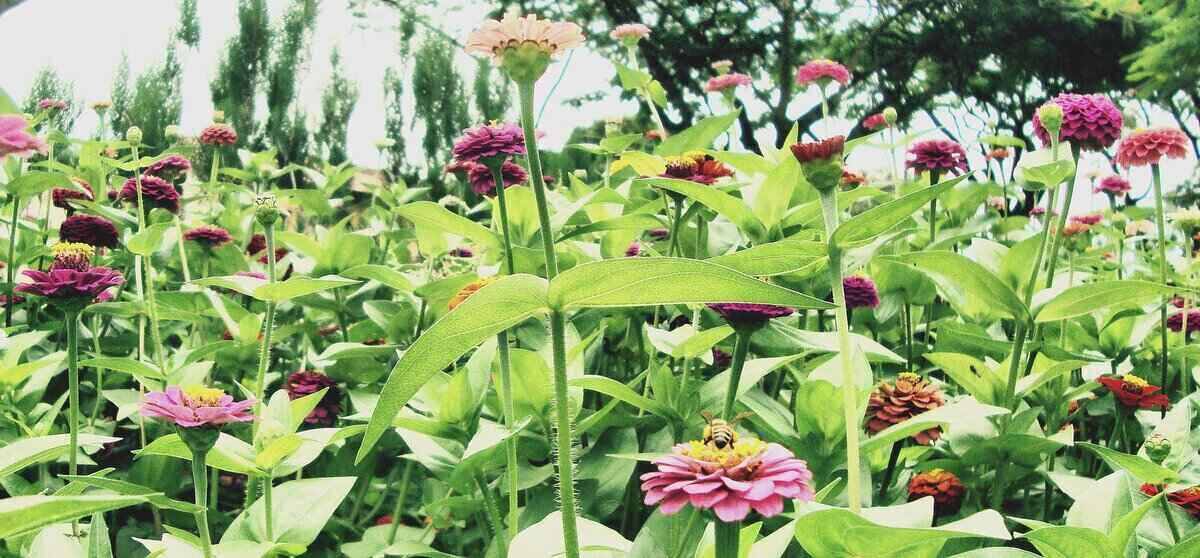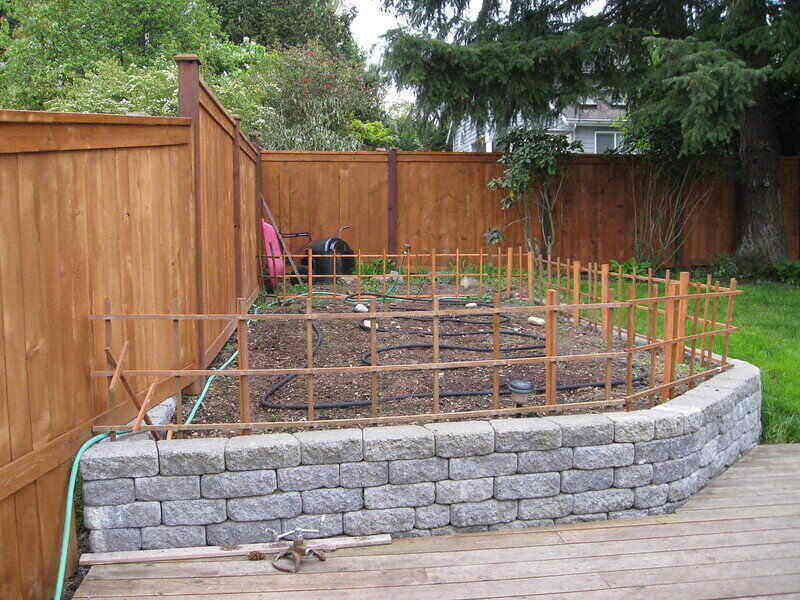
If you’re interested in a low-maintenance lawn, that’s probably because you want to spend your time doing other things like playing golf at Goodwin Golf Course or doing yoga on the Riverfront. Here are some ways your lawn can thrive on a low-maintenance diet.
- Design to thrive
- Hardscaping is hard to beat
- Find solutions to slippery slopes
- Use focal points
- Nurture native plants
- Grow ground cover
- Go mad with mulch
- Reduce your grass
1. Design to thrive
Not sure where to start to create a low-maintenance landscape? Start with design.
Or, better yet, start with a designer. If you want to create a comprehensive landscaping plan for your yard, it’s a good idea to call in an expert. A good landscaping contractor/designer will pay attention to your landscaping needs and work the design around your goals and vision.
Advantages of hiring a landscape designer:
- Technical expertise
Designers know how to deal with plant spacing, water needs, slope, erosion, drainage issues, and sourcing materials.
- Aesthetic planning
They have a knack for creating color balance and interest throughout the growing season, varying texture, mature plant height and width, adding focal points, and how the design complements the house.
- Tying it all together
They are experts at making sure the design will work technically, aesthetically, and meet your property maintenance goals.
Hiring a landscape designer may cost more up-front than DIY, but if you want to reduce your landscape maintenance long-term, this investment will more than pay you back in time and hassle in the long run.
Approximate cost: The average cost to hire a landscape designer is $3,298. It may be much less or significantly more depending on the scope of your project.
2. Hardscaping is hard to beat
Hardscaping is any non-living element in your lawn. When you see pavers, pergolas, decks, or fountains, these are considered hardscaping. Hardscaping increases function, provides visual interest, and creates defined spaces in the lawn.
Planning for hardscaping is an ideal way to reduce the maintenance in your lawn. Think of a patio, deck, or walkway. Once these elements are installed, there is very little upkeep, especially when compared with the living elements, such as plants or grass. Another popular hardscaping addition is an outdoor kitchen. This is another hardscape feature that increases the functionality and enjoyment of your outdoor space.
Don’t forget about paint when you think of hardscapes. Wooden elements such as benches, pergolas, and outdoor chairs are prime candidates for a splash of paint. Think of paint as a tool to add more low-maintenance color and visual interest to your property.
Advantages of hardscaping:
- Inherently low-maintenance
- Adds color, shape, and texture to the lawn (bricks, pavers, boulders, flagstone, painted wood)
- Increases outdoor living space and enjoyment (seating walls, patios, fire pits, decks)
Approximate cost: Varies widely. An installed patio, for example, will cost an average of $3,595, but that cost varies widely depending on the size of the patio and the materials you choose. For example, a basic 80-square-foot patio may cost as little as $576. If you want something larger, around 400-square-feet, and choose more costly materials, plan to spend as much as $8,800.
3. Find solutions to slippery slopes
A slope or incline in the lawn can be a prime opportunity for low-maintenance landscaping. Most homeowners are eager to find low-maintenance solutions because weed-eating a slope (assuming it’s too steep for mowing) is difficult and time-consuming.
Not only will you save time cutting the grass, but you’ll have the opportunity to add something beautiful and functional to your lawn.
Ideas for landscaping a slope:
- Install stone steps up the slope and fill the areas around the steps with mulch and plants that help control erosion
- Install a retaining wall
- Install terraces along the slope
Approximate cost: Varies. A professionally installed retaining wall costs from $3,623-$9,582.
4. Use focal points
Focal points help take up space and provide function and beauty in your lawn. Think of common focal points and the advantages they provide:
- Trees
Trees provide a natural focal point in the landscape. All you need underneath is some mulch and a few other small plants to fill in the mulched area.
- Seating
Benches, seating walls, and outdoor seating areas make a great focal point in the lawn. Seating is usually combined with some type of hardscaping, such as crushed gravel or a patio, which makes it a low-maintenance option for your lawn.
- Other hardscaping
Pools, fire pits, and water features are other focal points in the lawn. Pools and water features aren’t particularly low-maintenance unless you hire a landscaping service to do the upkeep.
Pro Tip: Don’t forget to add outdoor lighting to highlight pools and other focal points where friends and family may gather into the evening hours.
Approximate cost: Varies widely depending on the project. You can buy a bench starting around $60 new, or go thrifting and find a bargain for much less.
5. Nurture native plants
Native plants have many benefits to offer homeowners looking to add low-maintenance elements to their lawns. Native plants are usually defined as plants that have existed in a particular area before European settlement. As you may imagine, plants that have lived in a particular area for so long can mostly take care of themselves and so are beneficial to add to a low-maintenance lawn.
Advantages of native plants:
- Inherently low-maintenance
- Need little or no supplemental watering
- Few or no pesticides or chemicals
- Often provide desirable habitats for local pollinators and small wildlife
Native trees:
- American holly (Ilex opaca)
- Mountain maple (Acer spicatum)
Native flowering plants:
- Bloodroot (Sanguinaria canadensis)
- Butterfly weed (Asclepias tuberosa)
- Wild blue phlox (Phlox divaricata)
Native shrubs:
- Black chokeberry (Aronia melanocarpa)
- Summersweet (Clethra alnifolia)
- Sweet fern (Comptonia peregrina)
Native deer-resistant flowering plants:
- Black cohosh (Actaea racemosa)
- New England aster (Symphyotrichum novae-angliae)
- Wild columbine (Aquilegia canadensis)
Approximate cost: A professionally installed flower bed will cost anywhere from $585-$3,300.
6. Grow ground cover
Grass is a many-splendored thing, but there are places where it just won’t grow. In these instances, ground covers are often a good option. Ground covers can sometimes replace grass, but they are more often used in between large pavers or underneath shady trees. They can help stabilize soil, prevent weeds, and some will attract pollinators.
Native ground covers:
- Barren strawberry (Waldsteinia fragarioides)
- Bearberry (Arctostaphylos uva-ursi)
- Partridgeberry (Mitchella repens)
- Wild ginger (Asarum canadense)
Approximate cost: You’ll pay from $3.50-$15.50 per square foot for someone else to install the plants (labor and materials).
7. Go mad with mulch
Mulch is a four-season tool landscapers use in most lawns, low-maintenance or not. You can choose from organic mulches such as bark or shredded wood, or you can choose an inorganic mulch like stone, rocks, or gravel.
Advantages of mulch:
- Inexpensive
- Helps retain moisture
- Reduces weeding
- Keeps roots cooler in summer and warmer in winter
- Adds color to the lawn year-round, enhancing curb appeal
- As it breaks down, organic mulch adds organic matter to the soil
- An easy DIY project – not necessary to hire a professional
Approximate cost: Plan to spend $3-$7 per bag or $15-$75 per cubic yard for the mulch. Delivery will cost from $43-$146 and varies depending on their mileage costs. If you DIY, the labor is free, but if you hire it out, you’ll pay from $39-$71 per hour in labor costs.
8. Reduce your grass
If you love a beautiful lawn but the mowing, edging, blowing, and seasonal chores are taking up too much of your time, consider reducing the amount of grass in your landscape. Your HOA may not let you plant a pollinator meadow in the front yard, but you can add flower beds, plant trees, and grow ground cover to reduce the amount of mowable space.
If you’re removing a small patch of grass, you can likely do this with a shovel or spade. For larger jobs, hire a local Hartford professional or rent a sod cutter.
Advantages of shrinking your lawn space:
- Less time mowing, edging, and blowing (or less money to pay someone else to do it)
- Reduce seasonal watering
- Saves money on chemicals, fertilizers, and grass seed each year
Approximate cost: Plan to pay $1.50 per square foot to remove and dispose of old grass. Or, you can rent a sod cutter for around $70 for four hours with a $150 deposit. If you remove it yourself, you just need a spade or shovel, which you probably already have in your garage. If not, you can pick one up for under $20.
The final word on low-maintenance landscaping in Hartford
The benefit of low-maintenance landscaping is that your lawn looks after itself (for the most part), so you don’t have to. By implementing some of these ideas and strategies, you’ll have a beautiful, functional lawn all year long with less maintenance to worry about.
Here’s a Bonus Tip #9: The ultimate way to have a low-maintenance lawn is to hire a Hartford lawn care service to do it for you. Our lawn care pros will mow, edge, blow, and help you install low-maintenance lawn care elements so you can spend your free time doing what matters most.
Main Photo Credit: Victor Camilo | Flickr | CC BY-ND 2.0




